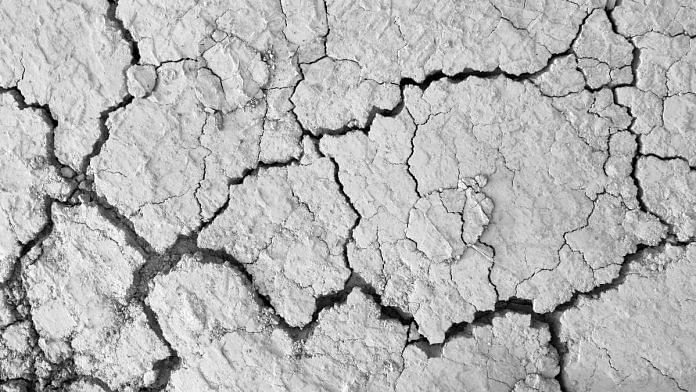New Delhi: Delhi, Rajasthan, Uttar Pradesh, Punjab and Haryana extracted more than 100% of their groundwater—significantly higher than the national average of 60%—in 2024, making them the states that over-exploit their groundwater resources the most in the country.
In Punjab, groundwater extraction was the highest—156%—revealed the Dynamic Ground Water Resource Assessment Report of 2024, published by the Central Ground Water Board (CGWB) on 31 December.
Over-exploitation happens when groundwater extraction is higher than its recharge, be it from the monsoon or other sources.
Whereas large-scale agricultural and domestic needs are known to drive the over-exploitation of groundwater in the northern states, it is less in the northeastern states. The report said that last year, Arunachal Pradesh recorded the lowest extraction—0.39%.
Jyoti Sharma, the president of FORCE, a climate and water-focused NGO, said, “If this rate of groundwater exploitation continues in the North, where 70% of the population depends on agriculture, soon there will be no water left for that activity. Not just livelihoods but drinking water security also depends on groundwater levels.”
“As more and more water is extracted, it also becomes saline and more impure, thus leading to health concerns,” she added.
The report, however, showed that overall, India’s annual groundwater recharge in billion cubic metres (bcm) has steadily risen since 2017 from 432 bcm to 447 bcm in 2024. According to the report, one of the main reasons for this is an increase in water conservation methods, such as tanks and other bodies.
There was roughly 406 bcm of extractable groundwater in India in 2024. Meanwhile, annual groundwater extraction has remained almost the same the last five years, from 249 bcm in 2017 to 246 bcm in 2024.
Another positive change has been the increase in groundwater ‘safe’ units, that is, aquifers not at risk of over-exploitation. In 2017, only 62% of the units were safe in the country, but in 2024, the number was 73%. At the same time, the number of overexploited units has reduced from 17% in 2017 to 11% in 2024.
The sample size of the CGWB study changes every year. Some 6881 units were assessed in 2017, 6,553 in 2023, more than 7,000 in 2022, and 6,746 in 2024, which complicates a year-on-year assessment.
How the states compare in a year is clear though.
State-wise reports
Among the over-exploited states, Delhi, Punjab, and Haryana see more groundwater recharge than Rajasthan during monsoon—more than 0.2 m annually—due to the nature of the loose soil in these states, which fall within the Indus-Ganga-Brahmaputra plains. In Rajasthan, the recharge is less because of lower rainfall and the rocky soil, with its annual recharge level among the lowest in the country, comparable to Mizoram’s.
While northern states see the most over-exploitation of groundwater, Arunachal Pradesh, Nagaland, Mizoram, and Meghalaya see the least. One of the reasons for this is the high groundwater recharge levels in the northeastern states due to rainfall.
Sharma said the northeastern states have lower population density and less agricultural land than other states, so their groundwater extraction is lower. Most of these states also have no saline units, i.e., when groundwater is extremely salty or polluted due to over-extraction or exposure to the sea.
Just 1.88% of all groundwater units in India are categorised as saline——127 of 6,746. Of these, 99 are in West Bengal and Andhra Pradesh, concentrated in the coastal regions. The number of saline units has increased in the country from 100 in 2017 to 127 in 2024, said the report.
“Groundwater is something that you can truly call as your own resource—so if you’re over extracting it, you’re quite literally eating up your own savings,” said Sharma.
Citing water security, Sharma cautioned against over-extraction of groundwater. Apart from Delhi, where domestic needs trump, all high-extraction states use most of their groundwater for agricultural needs.
“We need to start being more water-efficient in agriculture because it accounts for about 80% of the groundwater usage. If we reduce it by just 10-15%, we could have a real impact on water security,” said Sharma.
“Along with that, rainwater harvesting and check dams are the need of the hour,” added Sharma.
(Edited by Madhurita Goswami)
Also Read: How Punjab farmers sacrificed high income for a big cause—they gave up Pusa-44 this year






